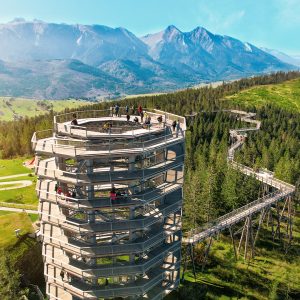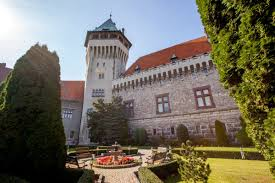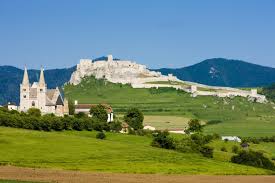Present day Levoča is an urban cultural historical reservation. It was founded in the middle of 13th century, after the Tatars raided the local lands. Successively it became the most important town in the Spiš region. Since 1271 it had been a seat of local self-government of 24 Spiš towns. The town is rich with historical gothic and renaissance buildings. Levoča was a cultural center of the Reformation processes in Slovakia. A printing plant had operated in Levoča since 1624. During anti-Habsburg uprisings in the 17th century, the town was on the decline.
In 1840´s Levoča was a center of the Slovak National Movement, protesting against the process of Hungarian assimilation of the Slovak nation. The current Slovak national anthem was officially heard here for the first time.
Levoca, with a number of its historical monuments, is one of the most important towns in Slovakia historically. In the historical center, you will find more than 50 gothic, renaissance and early-baroque houses of nobles with arcade interior courtyards. The original town walls from the 14th and 15th century still remained preserved around the town center and they are about 2 km long. Several towers, bastions, and Košická and Menhardská town gates have been reconstructed.
The Town Hall was built in the gothic style in the 15th century, and it was rebuilt in the renaissance style at the beginning of the 17th century. It has allegorical fresco paintings on its southern wall. The bell tower from 1656 – 1661, which in the 18th century gained some baroque features is connected to the Town Hall. The former Town Hall is today a museum of Spiš culture. In front of the Town Hall, there is a so-called “cage of shame” from the year 1600.
The gothic St. James church is also the National Cultural Monument and the second tallest church built before 1400 in Slovakia. Its late gothic interior, with several fresco paintings from the late 14th century, is very unique. The most unique is primarily the main altar, that is 18.6 m high and 6 m wide, and is from the beginning of the 16th century. The statues were carved by Master Ján Pavol from Levoča. Statues of Madonna with a child (2.47 meters – over 8 feet tall), St. James Sr. (2.32 meters – 7 3/4 feet tall) and of St. John Evangelist (2.30 meters – 7 3/4 feet tall) are situated in the center of the altar. Relief decorations and board paintings are on both wings of the altar. The painting of the Last Supper is dominating. The church interior is very well preserved. In fact, it is now a museum of sacral art of the Middle Ages. Very interesting are side wing altars with the paintings and individual statues. The main altar is the tallest wood-carved late-gothic altar in the world. This creation of Master Ján Pavol from Levoča is protected as a National Cultural Monument.
So-called Thurzo House is the most interesting of the townsmen houses in the town center. It was created in the 16th century by connecting two gothic houses. It will attract you by its façade color graphics and the unique gable architecture. Another important buildings are the gothic Minoritian church with monastery from the 14th century. The interior is in baroque style with gothic wall paintings from the 14th and 15th century. The Church of Holy Ghost and the Minoritian monastery are both situated close to Košická Gate built in the town walls and they were built in 1747.
The old town is picturesquely sited and still surrounded by most of its ancient walls. In associating the town with Spiš Castle and Žehra in June 2009 as the renamed World Heritage Site of “Levoča, Spišský Hrad, and the Associated Cultural Monuments”, UNESCO cites the town’s historic center, its fortifications, and the works of Master Paul of Levoča preserved in the town.
The main entrance to the old town is via the monumental Košice Gate (15th century) behind which is located the ornate baroque Church of the Holy Spirit and the New Minorite Monastery.
resource: slovenskyraj.sk
We are glad to provide you our services.
 +421 948 365 187
+421 948 365 187 info@realdealplus.com
info@realdealplus.com



